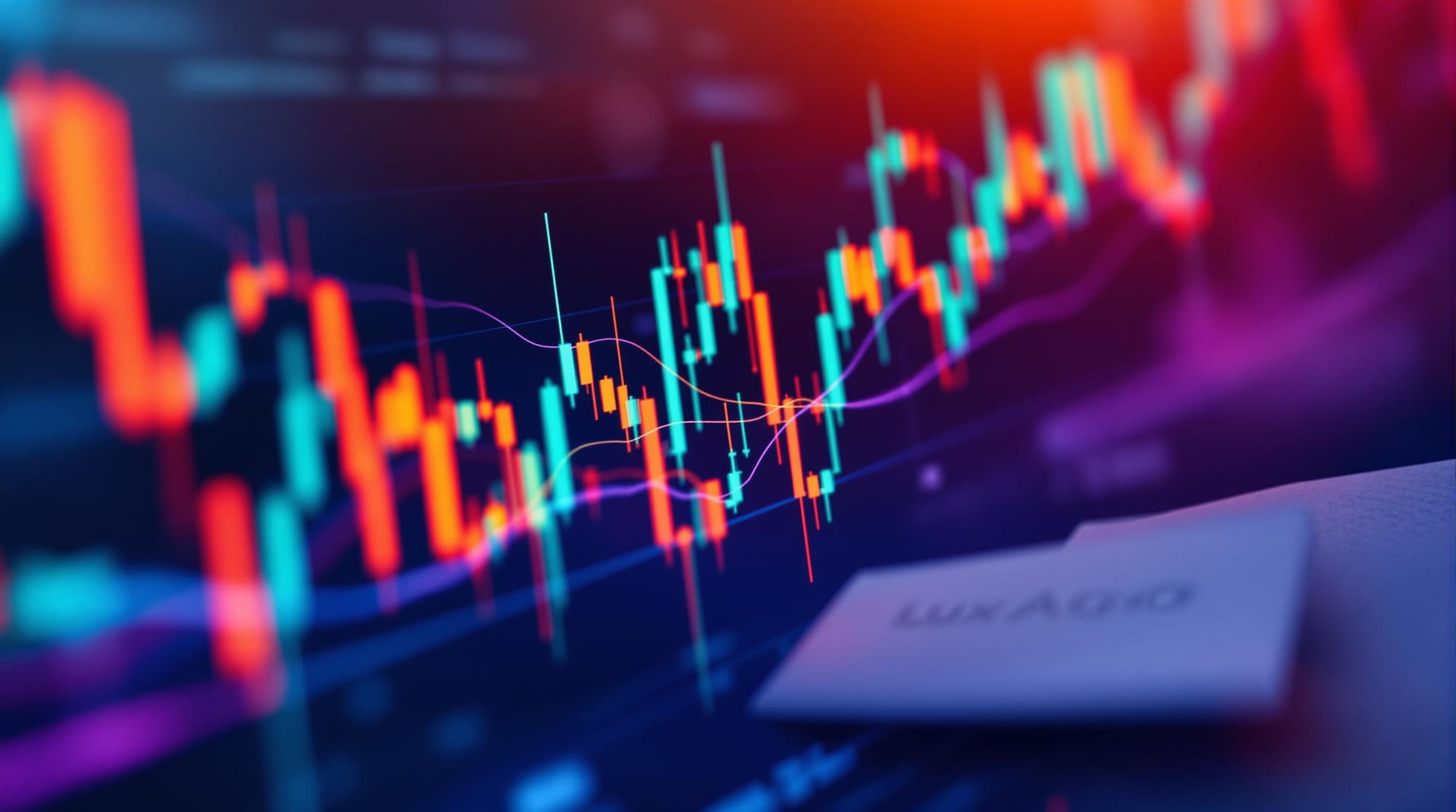Explore how algorithmic trading impacts market liquidity, balancing efficiency with risks of sudden instability during market stress.
Algorithmic trading (or algo trading) has transformed financial markets, handling most trades today. It offers key benefits like tighter bid-ask spreads and improved market efficiency but also introduces risks, such as sudden liquidity withdrawals and market instability during stress.
Key Points:
- Benefits:
- Reduces trading costs by narrowing bid-ask spreads.
- Enhances price discovery and market efficiency.
- Provides liquidity in calm markets.
- Risks:
- Can cause sudden liquidity gaps during volatility (e.g., 2010 Flash Crash).
- High-frequency trading (HFT) may amplify price swings.
- Creates a "liquidity mirage" with short-lived order availability.
Quick Comparison:
| Aspect | Benefits | Risks |
|---|---|---|
| Liquidity | Adds liquidity in stable markets | Withdraws liquidity in stress |
| Market Efficiency | Lowers transaction costs | Increases short-term volatility |
| Stability | Stabilizes in high-volume periods | Amplifies extreme price movements |
Algo trading is both a boon and a challenge for market liquidity. While it enhances efficiency, it requires careful risk management to avoid instability during market shocks.
The Man Who Crashed The Stock Market From Home
1. Positive Effects on Liquidity
Algorithmic trading (AT) has been shown to improve market liquidity, as highlighted by a study of 42 global equity markets conducted between 2001 and 2011. This research provides key insights into how AT enhances liquidity in various ways.
For instance, a one-standard deviation increase in AT activity can reduce spreads by 2.41 basis points. This impact is particularly noticeable in large-cap stocks, where AT helps minimize adverse selection and promotes more accurate pricing.
The way liquidity is provided has become much more efficient. These figures emphasize AT's role in maintaining market depth.
AT systems also improve market efficiency by constantly monitoring and reacting to market conditions. They add liquidity when spreads are wide and take it away when spreads narrow. Automated quoting systems, like NYSE's autoquote, have further contributed by increasing message traffic in active stocks by about 50%.
"On average, AT improves liquidity and informational efficiency but increases short-term volatility. Importantly, AT also lowers execution shortfalls for buy-side institutional investors." – Ekkehart Boehmer, Kingsley Fong, J. (Julie) Wu
The transition from traditional trading methods to AT, which uses techniques like slicing large orders based on benchmarks such as the volume-weighted average price, has amplified these liquidity improvements.
2. Negative Effects on Liquidity
While algo trading can increase liquidity, it also comes with the risk of sudden withdrawals and market instability. High-frequency trading (HFT) – which accounts for about 50% of US equity trading volume – can pull liquidity out of the market in a flash, potentially leading to systemic issues.
The dangers of these disruptions are real. Take the 2010 Flash Crash, where the Dow Jones Industrial Average plunged 1,000 points in just 36 minutes, wiping out $1 trillion in market value. Other examples include the 6% flash crash of India's Nifty 50 index in October 2021 and Ethereum's 78% price drop on Kraken in May 2021.
Modern markets are particularly exposed to such risks. Regulations introduced after financial crises have significantly reduced banks' ability to act as market makers. For instance, one major bank slashed its market-making staff from 500 to just three. As a result, markets now depend heavily on algorithmic traders for liquidity.
"It's like going into a grocery store and there's nothing on the shelves."
- Jeffrey Cleveland, chief economist at Payden & Rygel
HFT often exacerbates liquidity problems during periods of stress. Studies show that HFTs trade on the same side of the market 70% of the time during five-minute intraday windows. This "herding" behavior can intensify liquidity crises, contradicting the benefits of increased liquidity often associated with such trading.
Another issue is the "liquidity mirage." The median lifespan of an order is now just 2.5 seconds, creating the illusion of liquidity that disappears when markets face stress. This fragile setup leaves modern markets walking a thin line.
"[High-frequency trading] knows the price of everything and the value of nothing…the inability of the market's liquidity providers to process complex information may lead to surprisingly large drops in liquidity when the next crisis hits."
- Charles Himmelberg, Goldman Sachs
The forex market is especially at risk. With 50% of trades on major platforms like EBS driven by algorithms and no circuit breakers in place, it remains highly vulnerable to sudden liquidity crises.
Direct Comparison: Benefits vs. Risks
Let's break down how algorithmic trading influences market liquidity, both positively and negatively, using specific metrics and real-world effects.
| Aspect | Benefits | Risks |
|---|---|---|
| Trading Volume | Accounts for 52% of market orders and 64% of nonmarketable limit orders | High order volumes can disappear rapidly during market stress |
| Market Efficiency | Reduces bid-ask spreads, lowering transaction costs | Can lead to higher short-term volatility |
| Price Discovery | Promotes fairer pricing through quick adjustments | May create feedback loops that amplify price swings |
| Market Stability | Stabilizes markets on high-volume trading days | Can worsen price movements during extreme volatility |
These data points highlight how different trading styles impact liquidity. For example, passive algorithmic trading often reduces volatility and tightens bid-ask spreads, improving market conditions. On the other hand, aggressive algorithmic trading can destabilize markets, especially during volatile periods.
Trading styles also play a key role in liquidity dynamics. Algorithms may consume liquidity when spreads are narrow and provide it when spreads widen. In calm markets, algorithmic traders frequently act as market makers, but their rapid responses can intensify price movements, especially during turbulent times.
"Electronic trading and algorithmic trading are both widespread and integral to the operation of our capital markets." - U.S. Securities and Exchange Commission
This shift in market structure—as detailed in the LuxAlgo Price Action Concepts toolkit documentation—allows large orders to be executed with minimal price disruption. However, challenges arise when multiple systems interact, sometimes creating feedback loops that amplify price fluctuations. These issues become even more pronounced during market stress, as algorithmic traders may quickly withdraw, causing sudden liquidity gaps.
The trade-off between improved efficiency and emerging risks underscores the complexity of balancing market structure. While algorithmic trading has lowered transaction costs and enhanced informational efficiency, it has also introduced new vulnerabilities to the financial ecosystem.
Key Takeaways for Traders
Navigating the world of algorithmic trading requires a solid understanding of its mechanics and strategies. By focusing on execution, risk management, and market monitoring, traders can better handle the challenges of algorithm-driven markets.
Order Execution Strategies
Platforms like Interactive Brokers provide tools to enhance order execution in algorithmic trading. For example:
- VWAP algorithms: These align trades with daily volume profiles, helping traders secure better execution prices.
- TWAP algorithms: Designed for urgent trades, these spread orders evenly over a set time, minimizing market impact.
These tools are essential for traders aiming to optimize their execution in fast-moving markets.
Risk Management Essentials
A strong risk management framework can protect traders from unexpected market changes. Key components include:
| Component | How | Why |
|---|---|---|
| Position Sizing | Adjust positions dynamically based on conditions | Avoid overexposure during volatile periods |
| Stop Orders | Use trailing stops that move with price changes | Lock in profits while allowing for further gains |
| Diversification | Trade across multiple venues and time frames | Reduce reliance on a single liquidity source |
By combining these elements, traders can better manage risks and maintain stability.
Real-Time Market Monitoring
Constantly monitoring the market is critical. Pay attention to the bid-ask spread—a narrower spread signals higher liquidity, while a wider spread indicates potential execution difficulties. With algorithmic trading driving over 80% of market orders, keeping an eye on LuxAlgo’s free order book depth indicator is equally important.
For advanced execution, tools like VWAP, TWAP, Adaptive, POV, and Iceberg orders are invaluable. These strategies help reduce market impact, conceal large trades, and optimize timing based on current conditions.







